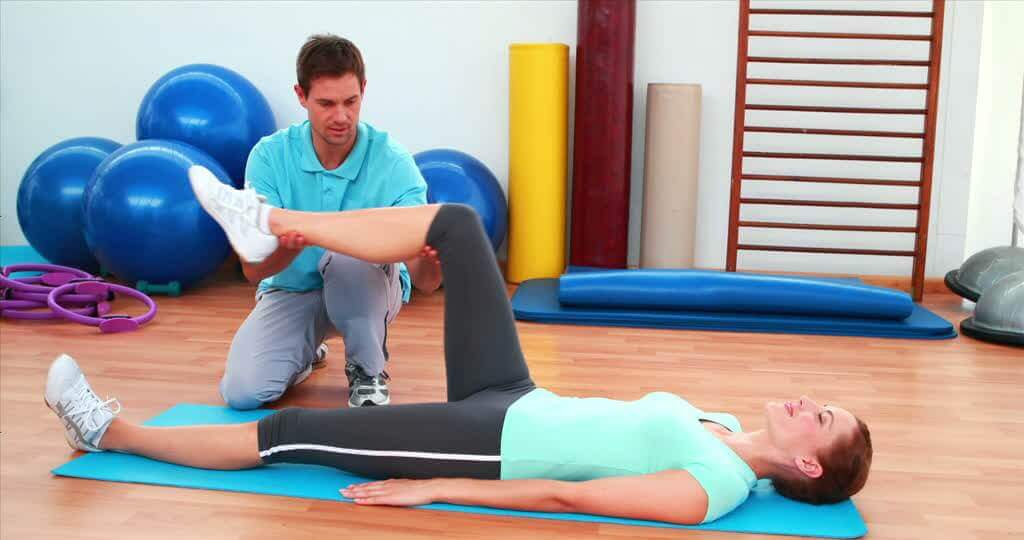3 exercises for sciatica: prevention and treatment

There is a set of exercises for sciatica that can be included in a plan for the prevention and treatment of your symptoms. Although it is true that the condition improves with rest, physical activity is recommended to strengthen the affected areas. When muscles and structures remain inactive, their bearing capacity decreases and the risk of injury or strain increases. This situation not only prevents the improvement of pain, but can lead to complications or damage of greater care.
On the contrary, the movements facilitate the exchange of liquids and nutrients within the discs and areas near the sciatic nerve, which prevents its irritation. Thus, it is not surprising that an exercise program is recommended for optimal recovery of patients.
What is sciatica?
Table of Contents

Before reviewing the main exercises for sciatica, it is important to explain what this condition means and how it manifests itself. Sometimes the term “sciatica” is used incorrectly, as many use it to describe pain that has nothing to do with the sciatic nerve.
Sciatica is a set of symptoms that originate when the sciatic nerve is compressed or irritated. The pain can start in the lower back (lower back), spreading to the buttock, the back of the leg, and the end of the foot. Most of the time it affects only one side of the body, however, in reduced cases there is a type of “bilateral” sciatica, in which both sides are involved. Along with pain , symptoms such as tingling , muscle weakness and movement limitations can be triggered.
However, its intensity level varies in each case, according to the underlying cause. While sometimes it is the result of an injury or accident, in other cases it indicates diseases such as herniated disc or spinal canal stenosis.
What are the characteristics of exercises for sciatica?

Exercises for sciatica are one of the most recommended therapeutic measures against this problem. Its practice has two purposes: first, to decrease existing pain in the short term; afterwards, provide conditioning to avoid the reappearance of symptoms. In all cases, it is important to have the supervision of a physical therapist, chiropractor, or certified trainer, as a poorly designed program can worsen the condition. On the other hand, these professionals can monitor that the postures are correct.
Similarly, before suggesting any routine, the physician must determine an accurate diagnosis to clarify the underlying cause. Although rare, sciatica can be caused by fractures, tumors, or infections that require other treatments.
What are the best exercises for sciatica?
Basically, exercises for sciatica are classified into three key areas. Each can be applied both to avoid crises and to the rehabilitation process. Below we clarify what they consist of:
1. Strengthening exercises

Strengthening exercises aim to increase the supporting capacity of the spine , muscles, ligaments and tendons. They often work the lower back area, but they also target the abdominal, gluteal, and hip muscles. Together, these sciatica exercises keep muscle groups active and decrease irritation of the sciatic nerve. Among other things, they increase the strength of the spine and facilitate movements that require more flexibility.
2. Stretching exercises
A large part of the prevention and treatment of sciatic pain is based on stretching exercises. These types of activities focus on increasing the flexibility of some muscles that tend to be stiff or rigid. Regardless of the diagnosis, stretching of the hamstrings is most often recommended. These muscles are located on the posterior aspect of the thigh and their tension usually affects the appearance of pain.
3. Low impact aerobic exercises

One of the components of the sciatica recovery process is low impact aerobic exercises. By not putting too much effort, they are ideal to relax the affected areas and stimulate circulation. Another of its benefits is that they facilitate the use of fluids and nutrients for optimal maintenance of the discs and affected areas. Furthermore, its ability to release endorphins produces an “analgesic” effect that minimizes pain.
Finally, it is important to remember that these exercises for sciatica must be complemented with good body posture. Maintaining an incorrect position can increase the pressure on the nerve and, therefore, pain crises.







